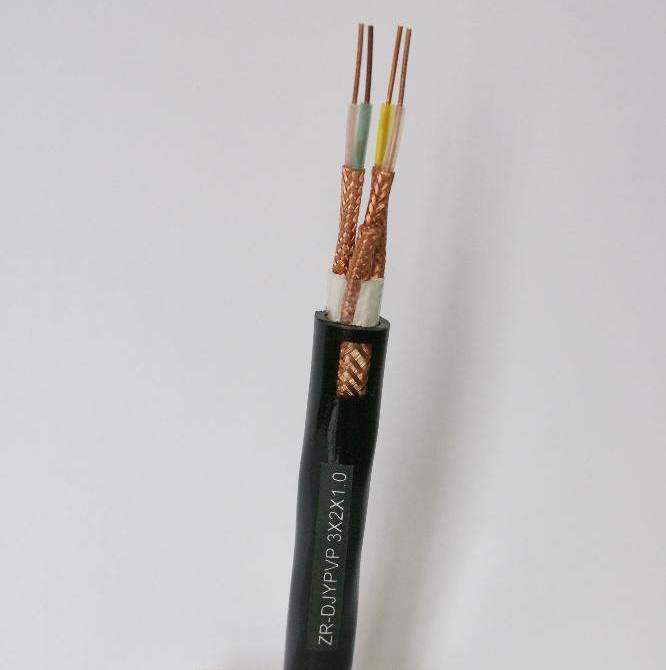ZR-DJYPVP flame retardant computer cable
- Tel:0550-7591188
- Fax:0550-7591188
- Email:2136705934@qq.com
Description
This product is suitable for the connection of detection devices and instruments with high requirements for AC rated voltage 300/500V or DC 1000V and below electronic computer networks and automatic control systems, and for signal transmission and anti-interference performance requirements.
Product description: Note: (ZR) flame retardant, (IA) intrinsically safe and high temperature resistant computer cables can be produced according to user requirements.
ZR-DJYPVP polyethylene J edge twisted copper tape overall shield PVC sheathed flexible computer cable
ZR-DJYPVP computer cable representation method: (1~37)×2×(0.5~2.5㎜?); (1~24)×3×(0.5~2.5㎜?)
product structure:
1) Nominal number of pairs (groups): 1-37 pairs (groups);
2) Conductor: annealed soft round copper wire, the nominal cross section is 0.50, 0.75, 1.0, 1.5, 2.5mm?;
3) J edge material: high density polyethylene;
4) Shielding: copper tape shielding;
5) Sheath: black PVC;
6) Identification and length marking: There are sexual identification marks on the surface of the cable, and the marking interval is not more than 1m. The marking contents include: the nominal cross section of the conductor, the number of wire pairs, the cable model, the M code of the manufacturer and the year of manufacture, and the length markings are separated by different intervals. Greater than 1m is marked on the outer surface.
Working conditions: laying indoors, cable trenches, pipelines and other occasions requiring electrostatic shielding.
Electrical performance:
1) The J-edge resistance should not be less than 2500MΩ·Km after stable charging with DC 500V voltage test for 1min at 20℃;
2) There should be no circuit between each paired shield and between the pair shield and the overall shield;
3) The core of the cable should be subjected to a voltage test of 50HZ AC 2000V for 5 minutes without breakdown between the cores and the shielding.
Use features:
1) The long-term allowable working temperature of the cable conductor: should not exceed 70 °C, and the cable should be prevented from high-temperature DC radiation or contact during use;
2) The cable laying temperature is not lower than: 0℃;
3) The ambient temperature of the cable is not lower than: fixed laying -40℃, non-fixed laying -15℃;
4) Allowable bending radius for cable laying and installation: unarmored cables should not be less than 6 times the outer diameter of the cables; armored or shielded cables should not be less than 12 times the outer diameter of the cables; flexible cables with shielded structures should not be less than 12 times the outer diameter of the cable 6 times the outer diameter of the cable.




